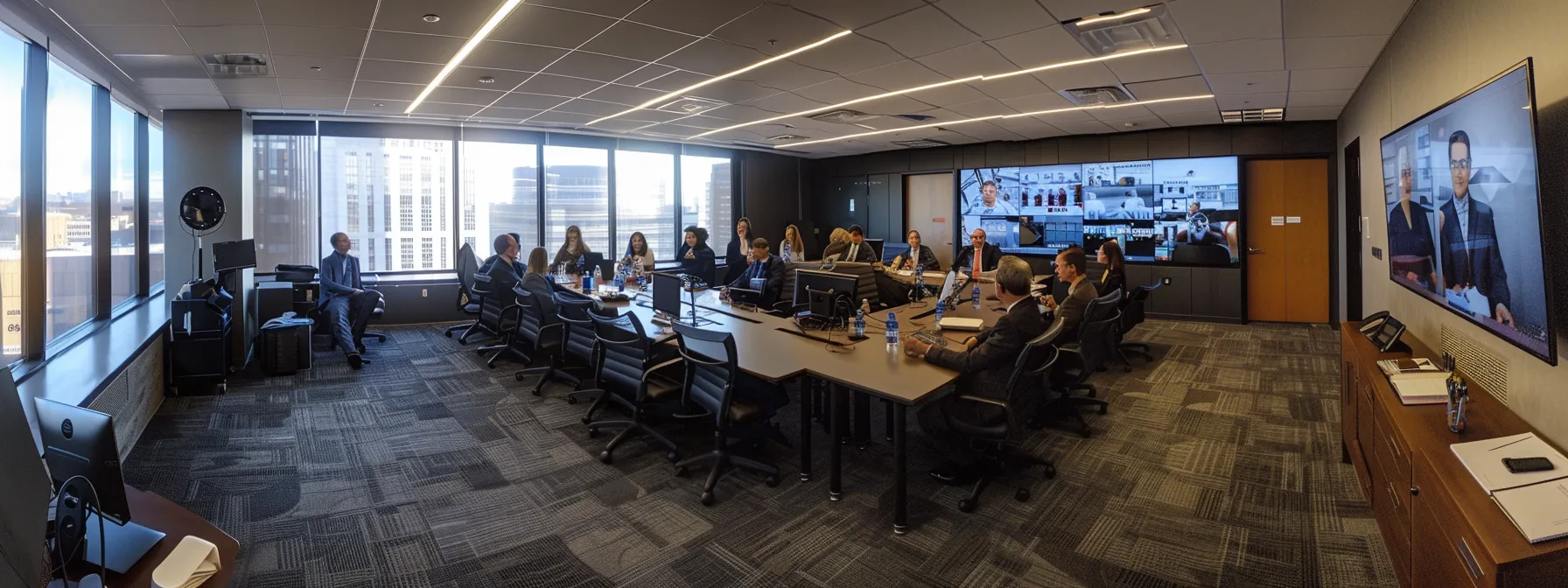RIA Transition Success Stories That Inspire Change
Making a successful transition to an RIA may seem like a daunting task. Yet, many financial advisors have made this leap and transformed their businesses for the better. This blog post will share inspiring RIA transition success stories, focusing on case studies of successful RIAs and the essential elements that contributed to their achievements. Readers will uncover practical strategies to tackle common challenges in transitions, helping them navigate their own journey and achieve lasting success. If you’re facing uncertainty about changing your business model, this content will provide the insights needed to move forward confidently.
Key Takeaways
- effective mentorship aids registered investment advisors during firm transitions and enhances client trust
- transparency and clear communication foster stronger client relationships and improve overall satisfaction
- adapting to market changes and client needs is essential for successful ria transitions
- strategic planning and team involvement lead to smoother transitions and sustainable growth
- utilizing technology streamlines operations and enhances service delivery throughout the transition process
Inspiring RIA Transition Success Stories That Drive Change

This section highlights transformative journeys in financial advisory, focusing on the key factors that contributed to successful transitions. It delves into the lessons learned from each success story, the crucial role of mentorship in RIA transitions, and effective strategies for overcoming common challenges. Each insight emphasizes the importance of succession planning, fee structures, and valuation in these evolving dynamics for wealth advisors and their customers. For more information, visit the uagria website.
Highlighting Transformative Journeys in Financial Advisory
Transformative journeys in financial advisory, such as those showcased by Dynasty Financial Partners, illustrate the powerful impact of organic growth and innovative strategies on wealth management. Advisors often find that by focusing on their unique value propositions and leveraging mentorship, they can navigate the complex transition landscape more effectively. Awards and recognitions not only celebrate these achievements but also highlight the importance of building a resilient business model that can adapt to changing market dynamics, ultimately enhancing client trust and satisfaction.
Key Factors That Contributed to Successful Transitions
Successful transitions for RIA firms hinge on several key factors, including a solid understanding of contracts and regulatory compliance. Advisors who prioritize thorough policy assessments often find smoother navigation through the complexities of investment banking relationships. By engaging experienced professionals and seeking mentorship, these firms can effectively address potential pain points, ensuring that the transition process enhances client trust and drives lasting success.
Lessons Learned From Each Success Story
Each success story in the RIA transition process reveals valuable lessons around strategic planning and the importance of understanding assets under management. Advisors who have navigated these changes often emphasize the need to control liability while building an organization that prioritizes scalability. By focusing on these elements, firms can position themselves for sustainable growth and a smoother transition that ultimately benefits their clients.
The Role of Mentorship in RIA Transitions
Mentorship plays a crucial role in the success of RIA transitions, especially for registered investment advisors navigating the complex landscape of asset management and fiduciary responsibilities. Experienced mentors provide invaluable insights on conducting due diligence and understanding the nuances of private equity structures, helping newer advisors avoid common pitfalls. With the right guidance, advisors can build a strong foundation for their practice, ensuring smoother transitions that ultimately lead to enhanced client trust and sustainable growth.
Strategies for Overcoming Common Challenges
Overcoming common challenges during an RIA transition requires thoughtful strategies that focus on collaboration and clear communication among all stakeholders. Financial advisors can benefit from engaging in open conversations with their chief information officer and procurement teams to streamline processes and avoid potential roadblocks. By fostering these discussions, advisors can create a more cohesive transition that addresses concerns early on, ultimately leading to a smoother experience for both the firm and its clients.
Change happens when people act. In the next section, real stories of successful RIAs will show how their choices shape lives.
Case Studies of Successful RIAs and Their Impact

Successful RIA transitions offer a wealth of insights into the financial advisory ecosystem. The profiles of leading RIAs highlight their achievements and milestones, showcasing how client relationships flourished post-transition. Innovative approaches to growth and scalability are also key, alongside the emphasis on team building through strategic changes. Additionally, an analysis of market trends and the role of mergers and acquisitions provide a comprehensive look at factors influencing employee retention and overall success.
Profile of a Leading RIA: Achievements and Milestones
A leading RIA showcases a successful transition through the deliberate approach of outsourcing certain operations, allowing wealth advisors to focus on delivering personalized services. With a chief executive officer at the helm who emphasizes research and client-centric strategies, they effectively address any doubt among stakeholders by demonstrating clear growth metrics and enhanced client satisfaction. This RIA’s achievements highlight the importance of strategic planning and innovation in building long-lasting client relationships:
- Outsourced key functions to streamline operations.
- CEO prioritized research to drive decision-making.
- Improved client relationships post-transition.
- Adaptive strategies that addressed market changes.
- Enhanced employee morale and retention.
How Client Relationships Flourished Post-Transition
Post-transition, client relationships have thrived as financial advisors embraced innovation and enhanced their service offerings. By prioritizing due diligence and addressing potential conflicts of interest, firms demonstrated a commitment to transparency and ethical standards, alleviating client concerns about possible lawsuits. As a result, clients feel more valued and understood, leading to stronger loyalty and growth in their financial journeys:
- Innovative service offerings were introduced.
- Transparency helped build client trust.
- Conflicts of interest were addressed proactively.
- Stronger relationships resulted in increased loyalty.
- Clients reported feeling more valued and understood.
Innovative Approaches to Growth and Scalability
Within the wealth management industry, innovative approaches are reshaping the landscape of RIA transitions. For instance, successful firms are now utilizing analytics to gain deeper insights into client needs and behavior, leading to improved service delivery and enhanced client retention. By adopting a higher standard of care through these data-driven strategies, advisors position themselves as thought leaders, driving change and inspiring success stories that resonate throughout the industry.
Building a Stronger Team Through Strategic Changes
Building a stronger team through strategic changes has proven essential for RIAs looking to foster solid client relationships and drive growth. For instance, UAGRIA advisors have successfully enhanced employee benefits, which not only contributed to higher morale but also attracted top talent in a competitive market. By prioritizing team cohesion and aligning goals, firms create an environment where both advisors and clients thrive, ultimately leading to lasting success.
Analysis of Market Trends Influencing Successful Transitions
Market trends significantly influence successful RIA transitions, particularly as firms assess price structures and payroll efficiency in a competitive landscape. For example, advisors shifting from larger broker environments like UBS to independent firms have often shared their success stories, emphasizing how they navigated these challenges. By understanding these patterns, advisors can better position themselves for growth, ensuring their services align with changing client expectations while fostering loyalty and satisfaction.
Successful RIAs know that transition is not just a change; it’s a chance for growth. The right steps can make all the difference as they move forward.
Essential Elements of a Successful RIA Transition

Successful RIA transitions thrive on several essential elements. First, assessing readiness for change sets the stage for effective investment management. Next, creating a clear vision and goals helps define the culture and marketing strategy moving forward. Ensuring compliance with regulatory considerations safeguards the process, while engaging team members promotes a smoother transition. Lastly, utilizing technology can streamline operations and enhance client base management as the transition unfolds.
Assessing Readiness for Change
Assessing readiness for change is a critical first step for wealth management firms considering a transition. Advisors must evaluate their current processes and identify potential risks, ensuring they have the necessary knowledge and resources for a successful onboarding experience. Emphasizing an open dialogue with all team members can help uncover concerns and facilitate a smooth change, ultimately setting the stage for a positive transition that meets user needs and expectations.
Creating a Clear Vision and Goals
Creating a clear vision and goals is crucial for successful RIA transitions, as it lays the foundation for a robust business model. Advisors looking to thrive in wealth management must align their objectives with client expectations, ensuring that all team members are on the same page regarding leadership and direction. This clarity not only fosters a cohesive environment but can also improve income streams by having a well-defined roadmap for growth:
Ensuring Compliance and Regulatory Considerations
Ensuring compliance with regulations is a fundamental aspect of a successful RIA transition. Advisors must stay informed about current laws and guidelines to safeguard their practice and protect client assets, including cash. By engaging compliance experts and performing regular audits, firms can mitigate risks and build a trustworthy relationship with clients during transitions:
- Stay updated on relevant laws and regulations.
- Conduct regular compliance audits.
- Engage compliance experts to address potential issues.
- Incorporate policies that protect client cash and investment resources.
- Communicate transparently with clients about compliance measures.
Engaging Team Members for a Smooth Transition
Engaging team members is crucial for a seamless RIA transition, as it fosters a sense of ownership and collective purpose. Advisors who involve their teams early in the process find this approach not only enhances morale but also encourages input on how best to navigate changes. Regular check-ins and open forums for feedback help address concerns while ensuring everyone is aligned with the firm’s new vision, leading to a more cohesive transition.
Utilizing Technology to Facilitate Change
Utilizing technology effectively can significantly streamline the RIA transition process, making it easier for firms to manage client relationships and internal operations. By adopting modern tools, advisors can enhance their service delivery and improve communication, which ultimately leads to better client satisfaction. Embracing software solutions for data management and client interaction allows firms to focus on personalized strategies while ensuring compliance and efficiency throughout the transition.
Transitions in RIA journeys are rarely smooth. Each obstacle faced can shape the path ahead and can present valuable lessons worth learning.
Overcoming Obstacles in RIA Transitions

Identifying common hurdles faced by RIAs is essential in ensuring a smooth transition. Real-life examples illustrate effective problem-solving techniques, shedding light on the importance of adaptability in transition strategies. Cultivating resilience within the firm and building long-term sustainability after the transition are also key components. Each of these areas will provide practical insights to navigate the challenges that come with RIA transitions.
Identifying Common Hurdles Faced by RIAs
Registered Investment Advisors (RIAs) often face several common hurdles during transitions that can complicate their path to success. From regulatory compliance and operational inefficiencies to navigating conflicting client interests, the challenges can feel overwhelming. Understanding these pain points and developing strategies to address them is vital; for instance, seeking mentorship or engaging in open communication among team members can help mitigate these risks and foster a smoother transition.
Real-Life Examples of Problem Solving
Many RIAs have successfully navigated challenges during transitions by implementing clear communication strategies and fostering collaboration among team members. For example, one firm faced regulatory hurdles that could have delayed their transition, but they organized regular meetings to keep everyone informed, which not only eased anxiety but also encouraged innovative problem-solving. This proactive approach not only helped resolve compliance issues swiftly but also strengthened team cohesion, ultimately leading to a smoother and more successful transition process.
The Importance of Adaptability in Transition Strategies
Adaptability is a crucial component for successful RIA transitions, as market dynamics and client expectations can shift rapidly. For RIAs embracing change, the ability to pivot strategies and embrace innovative solutions often makes the difference between a smooth transition and a troubled one. Advisors who actively seek feedback and constantly reassess their approaches are better positioned to navigate challenges effectively, ensuring that their practices continue to meet evolving client needs while fostering long-term success.
Cultivating Resilience Within Your Firm
Cultivating resilience within a firm is crucial for successfully navigating the challenges of RIA transitions. Advisors can foster a culture that embraces change by encouraging team members to share their perspectives and support each other through the ups and downs. This approach not only strengthens relationships within the team but also equips the firm to better handle unforeseen obstacles, ultimately leading to a smoother transition experience for both advisors and their clients.
Building Long-Term Sustainability After Transition
To build long-term sustainability after a successful RIA transition, firms must focus on fostering a culture of adaptability and continuous improvement. This involves regularly assessing client needs and market trends to remain relevant and responsive. Advisors can implement regular feedback loops with clients and team members to refine services and ensure they are meeting expectations in a competitive environment:
The path ahead for RIAs is clear yet uncertain. As they look to the future, they must adapt and refine their strategies to thrive in a changing landscape.
The Future of RIA Transitions

The future of RIA transitions is shaped by several key factors, including predictions for the industry and upcoming trends that impact investment strategies. Best practices for staying ahead in transitions, along with advice from industry leaders, pave the way for new RIAs. Continuous learning and strengthened community connections are vital for ensuring long-term success in this evolving landscape.
Predictions for the Industry and Upcoming Trends
As the landscape of Registered Investment Advisors (RIAs) continues to evolve, predictions indicate a significant shift towards greater emphasis on technology and personalized client experiences. Advisors are expected to adopt advanced analytics and artificial intelligence tools to better understand client needs, enhancing service delivery while building lasting relationships. Additionally, the rise of hybrid models combining traditional advisory services with digital platforms is likely to shape future transitions, allowing firms to cater to a broader client base with diverse needs.
Best Practices to Stay Ahead in RIA Transitions
To stay ahead in RIA transitions, firms should prioritize clear communication and foster team collaboration. Engaging all team members in the transition process not only boosts morale but also encourages innovative solutions to potential issues. Advisors can establish regular check-ins and open forums for feedback, ensuring everyone feels valued and aligned with the firm’s goals:
- Regular communication prevents misunderstandings.
- Team involvement enhances commitment to the transition.
- Feedback loops create opportunities for improvement.
- Adaptability helps firms meet changing client needs.
Advice From Industry Leaders for New RIAs
Industry leaders emphasize that new RIAs should prioritize building strong relationships and maintaining open communication with clients. By understanding client expectations and adapting services accordingly, advisors can create a more personalized experience that fosters trust and loyalty. They also recommend leveraging technology to streamline operations, which helps deliver enhanced client experiences while managing regulatory requirements effectively.
The Importance of Continuous Learning and Development
Continuous learning and development are vital for Registered Investment Advisors (RIAs) transitioning to new business models. Keeping up with industry changes helps advisors understand evolving client needs and enhances their service delivery. As they educate themselves on regulatory updates and innovative technologies, advisors set the stage for a successful transition that ultimately leads to stronger client relationships and business growth:
- Stay informed about industry trends to adapt strategies.
- Engage in regular training sessions to improve skills.
- Encourage team collaboration for innovative solutions.
- Gather feedback from clients to refine services.
Strengthening Community Connections Post-Transition
Strengthening community connections after transitioning can significantly enhance the sustainability of a Registered Investment Advisor‘s (RIA) practice. By actively engaging in local events, fostering relationships with community leaders, and giving back through initiatives or sponsorships, firms can create a sense of trust and reliability among clients. This not only helps in retaining clients but also attracts new ones who appreciate a firm that values community ties and client relationships.
As the landscape shifts, the stories of those who have navigated these changes become vital whispers of wisdom. Their shared experiences light the way for new journeys in this evolving world.
Encouraging Success Through Shared Experiences

Networking among Registered Investment Advisors (RIAs) proves invaluable as they navigate transitions. Joining support groups and forums fosters a sense of community, while celebrating milestones together creates motivation for continued success. Ongoing dialogue about best practices and sharing resources enhances collaboration, positioning advisors for future achievements in their practice.
The Value of Networking Among RIAs
Networking among Registered Investment Advisors (RIAs) is a powerful tool for sharing insights and best practices during transitions. By connecting with peers, advisors can exchange strategies that have helped others successfully navigate challenges, from regulatory compliance to client retention. These connections foster a supportive community that encourages growth and innovation as they learn from one another’s success stories:
- Participation in industry forums opens up discussions on effective transition strategies.
- Sharing experiences helps identify common challenges and solutions.
- Building relationships creates opportunities for mentorship and collaboration.
- Networking strengthens community ties, enhancing overall client trust.
Joining Support Groups and Forums
Joining support groups and forums can significantly enhance the transition experience for Registered Investment Advisors (RIAs). These platforms provide valuable opportunities for advisors to connect, share their stories, and access insights from peers who’ve successfully navigated similar changes. By learning from practical examples and best practices, advisors can feel more confident in handling challenges, gaining both reassurance and actionable strategies tailored to their specific situations:
Celebrating Milestones and Achievements Together
Celebrating milestones and achievements during RIA transitions can energize teams and strengthen client relationships. Recognizing key successes, whether it’s hitting a new revenue target or successfully onboarding clients, reinforces a culture of collaboration and appreciation. These celebrations not only foster team spirit but also showcase the firm’s commitment to excellence and client satisfaction, driving motivation to further enhance service offerings:
Creating an Ongoing Dialogue About Best Practices
Creating an ongoing dialogue about best practices in RIA transitions fosters a culture of collaboration and shared learning among advisors. Regular discussions among peers can reveal effective strategies and innovative solutions that others have successfully used in their journeys. By sharing experiences, advisors not only boost their confidence but also build a supportive network that ultimately enhances their service delivery and strengthens client relationships.
Sharing Resources and Tools for Future Success
Sharing resources and tools for future success is essential for Registered Investment Advisors (RIAs) as they navigate transitions. By leveraging templates for client onboarding, compliance checklists, and technology recommendations, advisors can equip themselves with the right strategies and tools to streamline their processes. This not only eases the transition experience but also enhances service delivery, ultimately leading to stronger client relationships and improved business outcomes:


